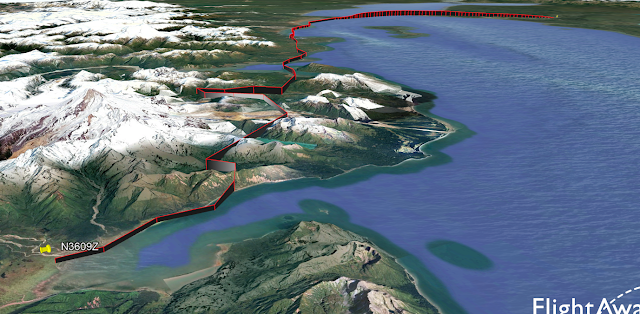- Location: Eagle Nest, NM
- Accident Number: WPR25FA205
- Date & Time: July 6, 2025, 13:45 Local
- Registration: N5009B
- Aircraft: Beech F35
- Injuries: 1 Fatal
- Flight Conducted Under: Part 91: General aviation - Personal
On July 6, 2025, about 1345 mountain daylight time, a Beech F35, N5009B, was destroyed when it was involved in an accident near Eagle Nest, New Mexico. The pilot was fatally injured. The airplane was operated as a Title 14 Code of Federal Regulations Part 91 personal flight.
The pilot lived in the town of Eagle Nest but worked in the Hobbs area of Southern New Mexico. His routine was to fly home in the airplane every three weeks, landing at Angel Fire airport (AXX), and on July 4th he made the trip home to celebrate the holiday.
He had planned to return to Hobbs on July 6th, and because it was a Sunday and the Fixed Base Operator was closing early, he returned to refuel the airplane in the morning. He asked the lineman to refuel the airplane to capacity, and 28 gallons of fuel was added.
The pilot returned to the airport just after noon with family members, and after loading the airplane, he departed about 1330. According to the pilot’s wife, when they arrived, the airport was surrounded to the north, east, and west by towering storm clouds, and the south was obscured by a wall of grey clouds. She became concerned that the weather would not be safe for flight, but the pilot stated that he was able to monitor it with his ForeFlight application and if it became dangerous, he would return to the airport.
Witnesses stated that they observed the pilot perform work to the nose gear of the airplane prior to departure. The pilot’s wife stated that this was not unusual, because the nose gear strut had developed a leak, and he would often service it with air. She observed the takeoff, which was to the north, and reported that it was uneventful.
Angel Fire Airport was within a 5-mile-wide valley at an elevation of 8,380 ft msl. It was bound by mountain peaks reaching 11,721 ft to the east, and 13,161 ft to the west. According to family, after departure the pilot typically flew to the Eagle Nest Damn just to the north, and followed Cimarron Canyon through to the lower plains, about 20 miles east. From there he would fly south to Hobbs (see figure 1).
Due to the terrain surrounding the airport, there was no radar available, and review of the airplane’s flight history indicated that its ADS-B system was not operating consistently during the months leading to the accident.
Family members became concerned when the pilot did not arrive in Hobbs later that day and an alert notice (ALNOT) was issued with the FAA. The airplane was located two days later, about 10 miles northeast of AXX.
The airplane came to rest on a 30° slope at an elevation of 9,932 feet msl, at the end of a box canyon. It was about 500 ft below, and 2 miles west, of Cimarroncito Peak.
The area was composed of loose rock, and tightly spaced pine and aspen trees reaching about 75 ft in height. All the airplane’s primary structure and flight control surfaces were accounted for at the accident site and were within a 50 ft diameter of the main wreckage.
The first identified point of impact was to the tops of three trees, which had their crowns severed by about 5 ft. Sections of bark had been stripped from the south and west faces of the trees, with fragments of wing skins at their bases. The outboard section of the left wing was located in the branches of one tree. A 10 ft wide and 18-inch-deep ground disruption containing both propeller blades was located about 25 ft northeast of the first impact point. The tail section came to rest on top of the disruption, with the cabin and right wing just to the north. With the exception of the left wing located in the tree, and the outboard section of the right wing, almost the entire airplane had been consumed by fire, with only steel remnants and burnt aluminum and plastic fragments remaining.


















